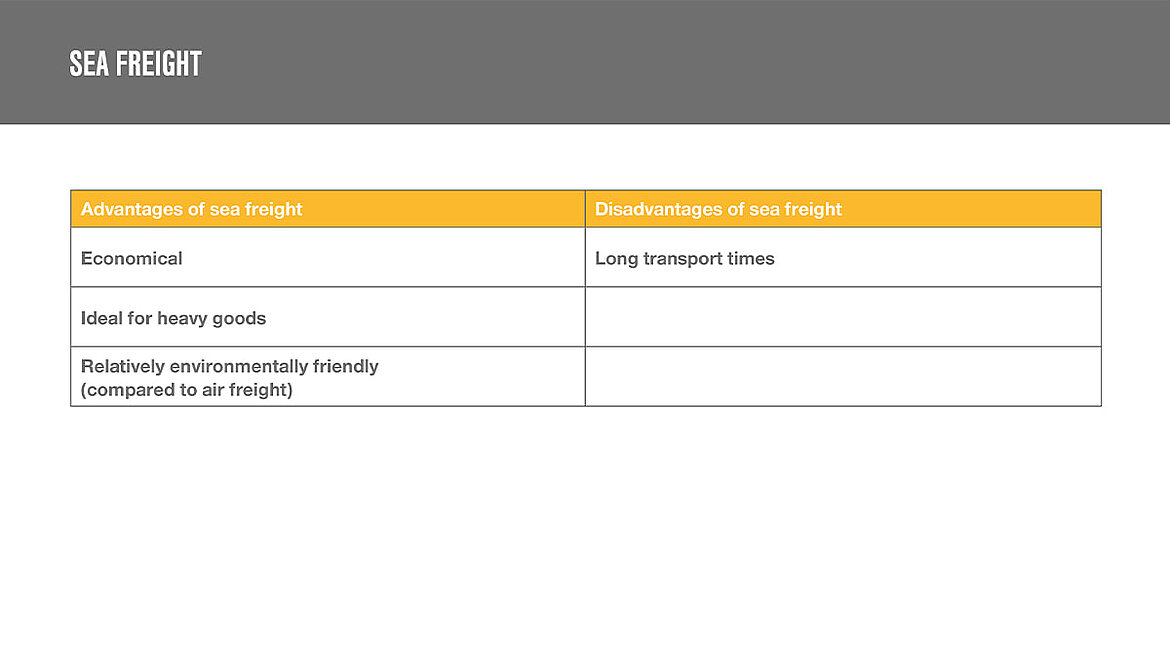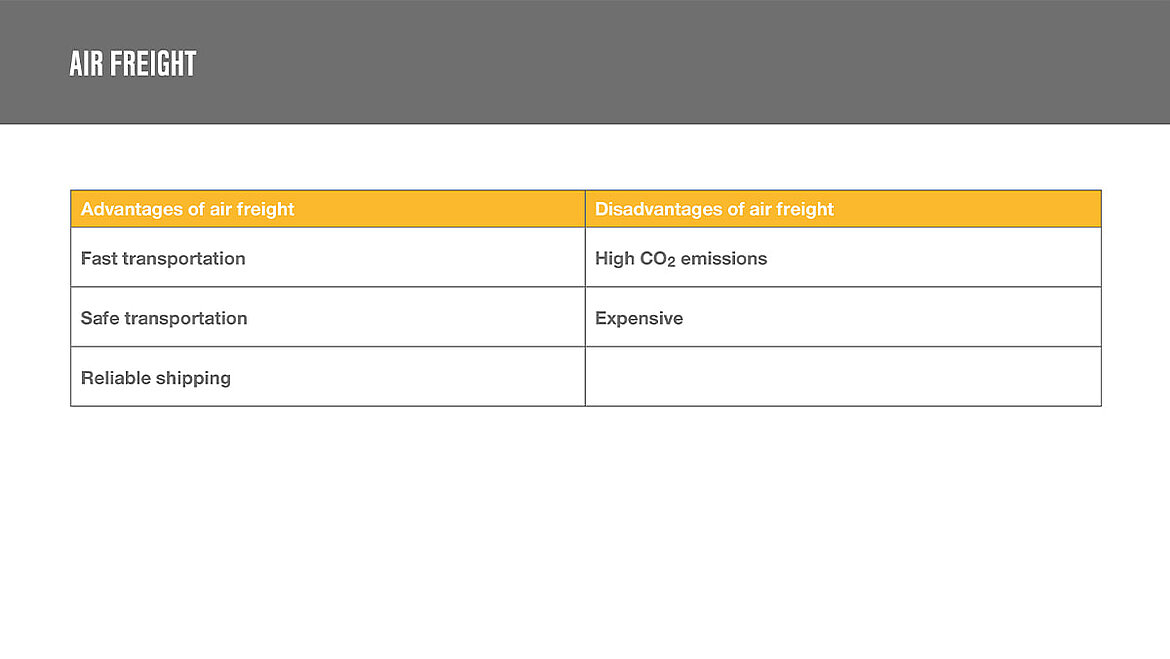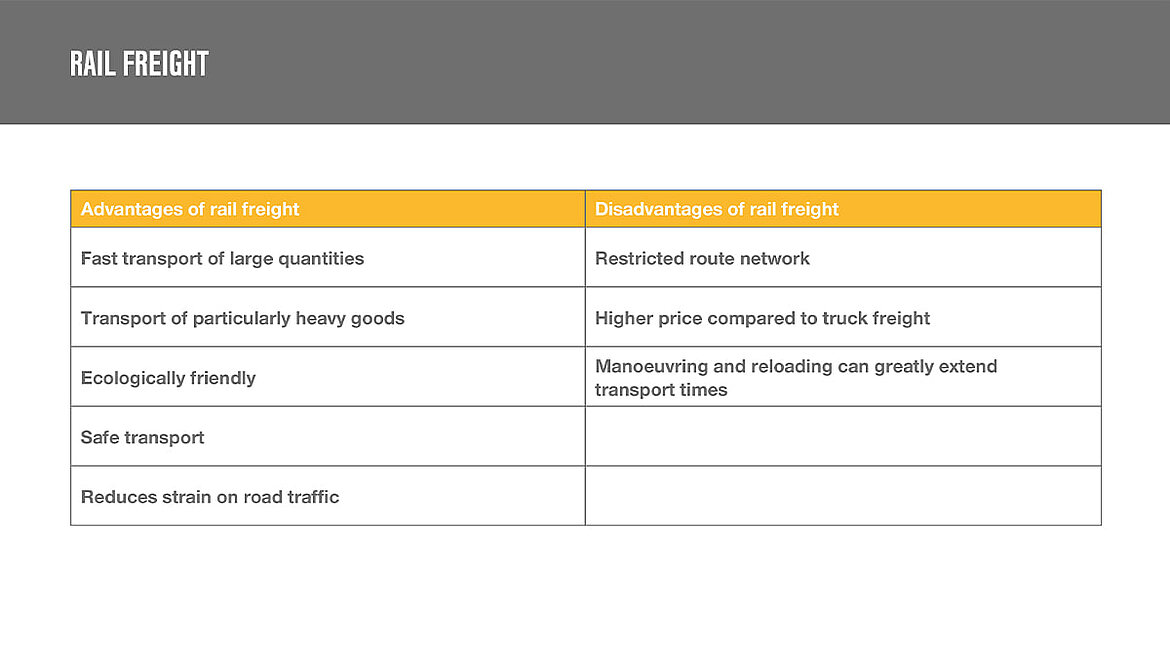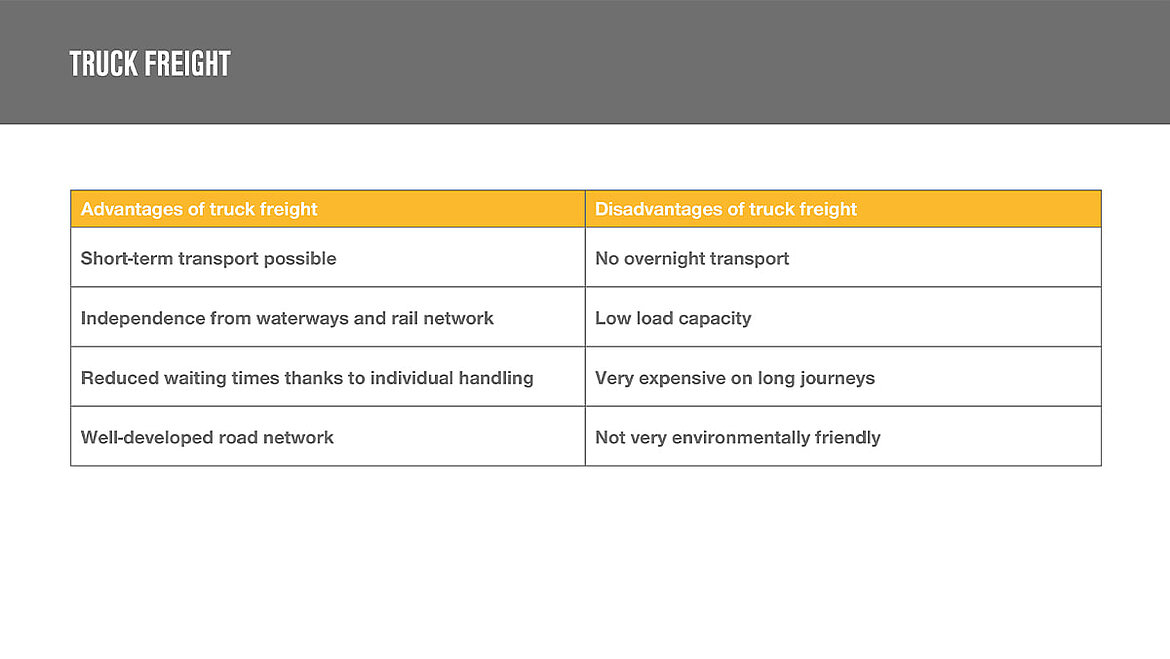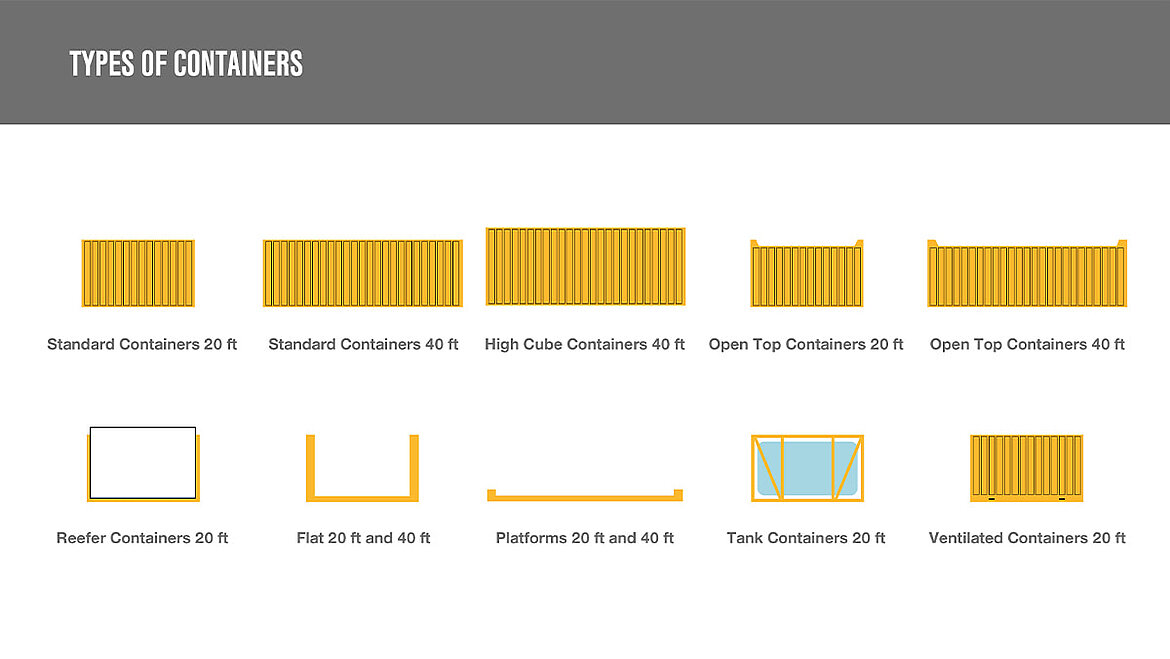Trousers, shoes, furniture, automotive parts, machines, food, smartphones, and liquid goods such as oils or chemicals. All these goods have in common that they are transported worldwide in containers from A to B, whether by ship, aircraft, train or truck. There are different types of containers, which in turn have been developed for a wide range of transport requirements and also goods. Liquids and gaseous cargoes are mainly transported in tank containers. The special feature of this type of container is that, unlike “standard containers”, the outer shell is often made of glass-fibre reinforced plastics. LAMILUX X-treme is the lightest and at the same time the strongest tank cladding product in the world, revolutionising global tank container logistics.
History of global container logistics
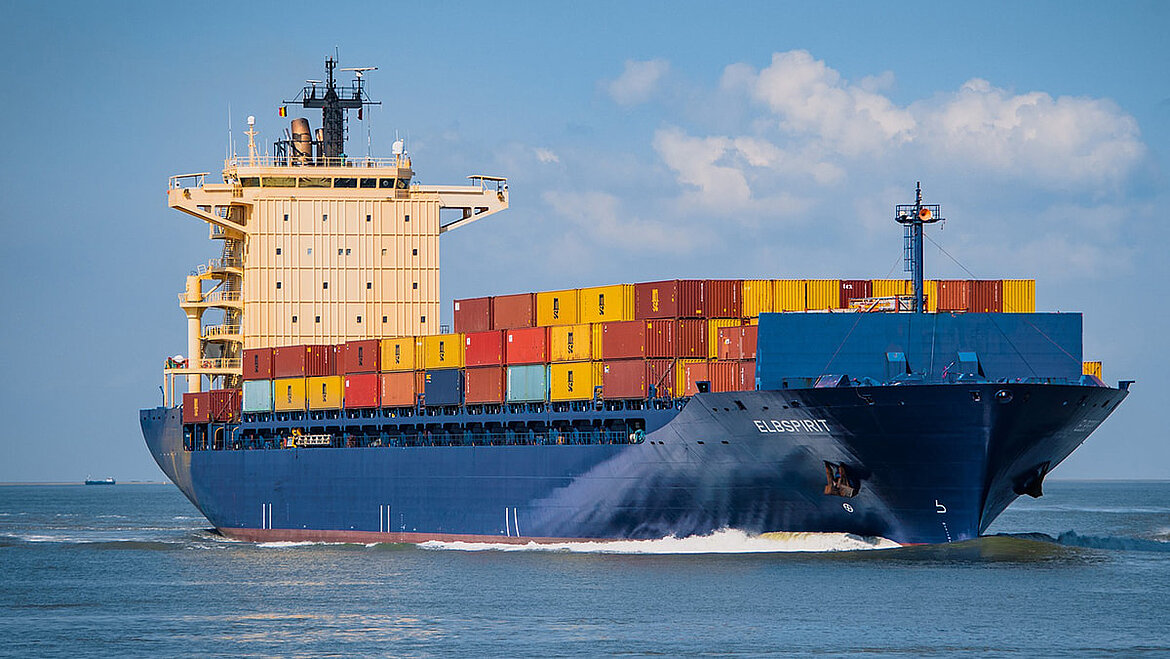
In simple terms, container logistics means the transport of goods in containers. The term container comes from the Latin, derived from the word “continere”, translated: hold together, contain. The origins of container logistics date back to the 18th century. Then wooden crates were first used to transport goods by horse or rail. The 1950s saw the breakthrough in container logistics. The US transport company Malcom McLean is regarded as the inventor of multimodal transport with the help of containers.
Together with engineer Keith Tantlinger, he developed the first standardised steel container.
In 1956, he loaded a converted tanker ship with 58 containers and shipped it from Newark (New Jersey) to Houston (Texas) - a world-changing revolution in shipping and global trade. In 1966, the first containers arrived in Germany, more precisely in the port of Bremen. Today, around 90% of goods in international trade are transported in containers on ships.
Processes in container logistics
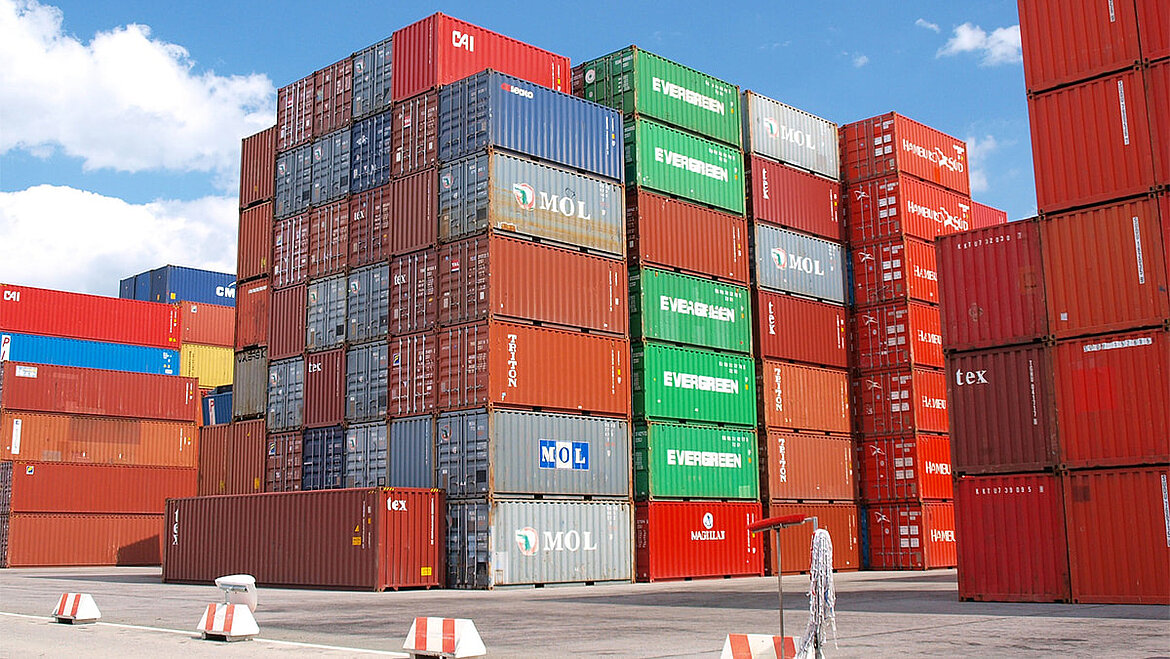
In addition to the storage and transport of containers, container logistics also includes another process – the handling of goods and merchandise, i.e. loading the containers onto other means of transport, e.g. from truck to train or ship. Container transport thus revolutionises freight transport in many ways, as the goods do not have to be loaded individually, which saves a lot of time. In addition, several goods can be transported simultaneously in one container, which in turn leads to cost savings.
Other processes, such as the maintenance, inspection and repair of damaged containers, as well as their worldwide tracking through clear identification, also fall under the umbrella of the term container logistics.
Transport options
Transport companies are usually responsible for transporting goods. Depending on the form and requirements of the freight types, different means of transport such as ship, aircraft, railway or truck are used.
Sea freight
In sea freight, the goods are transported globally by ship overseas. Within Germany, this is referred to as inland waterway transport. Sea freight is divided into bulk and container transport. Bulk transport means transporting loose goods (earth, coal, ore) or liquids. However, container goods are more typical of maritime trade and therefore make up an enormous proportion of freight at sea.
As there are different types of containers, liquids and gases, bulk goods (e.g. coal) or general cargo (e.g. vehicle parts) can also be transported in special transport containers. However, container goods with general cargo or groupage goods on pallets are typical. Some containers are full of goods from a single consignor, which is known as a “full container load” (FCL). If containers are filled with goods from different consignors, it is called “Less than Container Load” (LCL). Transport by sea is particularly suitable for heavy goods, and also for light goods that need not be transported quickly, but rather economically. Most goods are shipped to Europe.
Air freight
Air freight means that the goods are transported by air on air freight pallets or in air freight containers. There are several ways of transporting the goods here. Nearly 85% of air freight is transported in the lower decks of conventional passenger aircraft. Although the quantity of goods to be transported is very limited, the freight arrives at its destination quite quickly. In addition, CO2 emissions are reduced.
A second transport type is by freight aircraft. These have significantly more space, which means that more cargo can be transported relatively quickly. A further distinction is made between a full charter, i.e. an entire aircraft, which transports the goods along the desired route. For partial charters, only a certain share of the aircraft’s loading capacity is used, the route can also be determined here, and other merchants can hire space on this aircraft. A third option is groupage transport for air freight, whereby the goods can be booked onto planes following previously existing itineraries. Typical air cargoes are generally goods that need to be transported quickly, such as plants, live animals, organs for transplantation, certain foods or relief goods.
Rail freight
Rail freight means that goods are transported by rail. The goods can either be secured in containers on the railway cars or stored directly in the railway cars. Rail transport is the second most common mode of transport in Germany. The advantage of this is that the freight trains can transport large quantities of particularly heavy goods quickly, safely and in an environmentally friendly manner. Different goods can also be transported on the individual railway cars.
Truck freight
In Germany, most freight is transported by truck. No wonder, because no other means of transport stated above can accommodate different goods at any time, anywhere, flexibly and economically. For short-term transport of individual containers, this option is the best choice. Many transport companies even have special warehouses and transshipment points so that local orders can be quickly received and distributed to other regions.
In short distance transport, there is hardly any alternative to transporting goods by truck. It is even possible to load trucks and transport them by train or ship. This completely eliminates time-consuming transshipment. However, there are also disadvantages. Trucks have an extremely serious impact upon the environment as well as creating noise and traffic pollution on the roads.
Different container types
Containers enable goods and goods to be transported safely and efficiently over long distances around the world, as described above. There are several types of containers, each differing in shape, size and design. There is a suitable transport container for every commodity, such as dry containers for general goods, refrigerated containers for perishable goods and tank containers for liquid freight. The dimensions of the containers may vary. Most, however, comply with ISO standards (International Organisation for Standardisation). The standard container is the most widely used type of container. As it is usually made of steel or aluminium, it is very robust and can withstand high loads. It is weatherproof, robust, stackable and therefore easy to transport and store.
Depending on the type of container, these can also be connected to each other, facilitating the transport of even greater quantities.
GRP material in container logistics
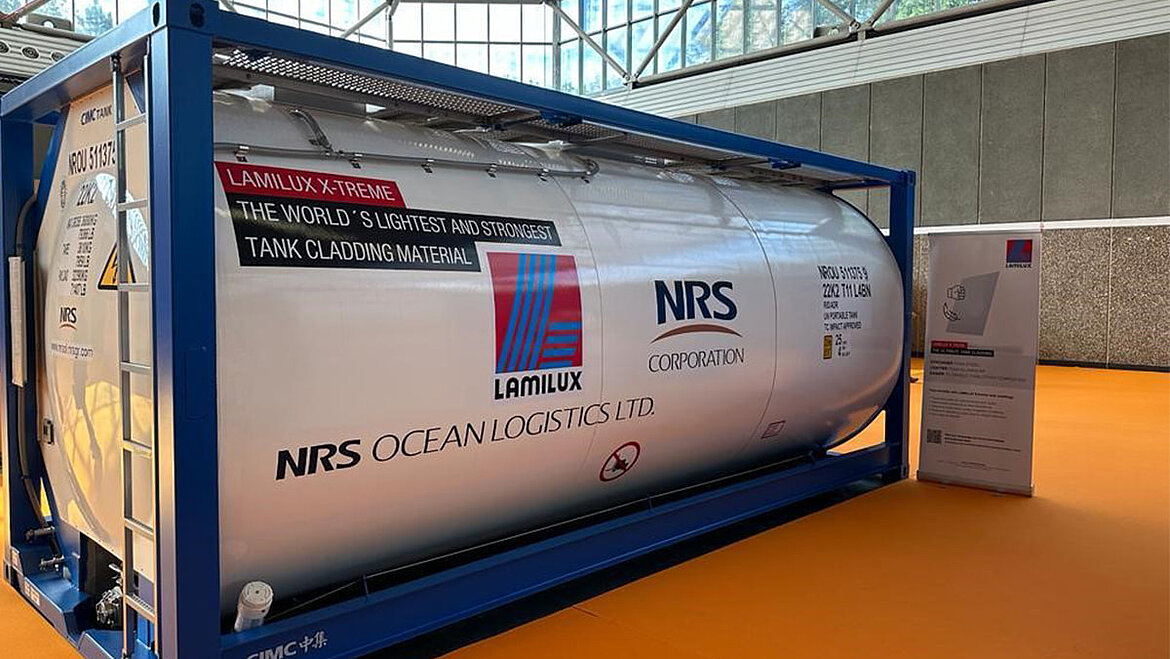
The tank container is a very special type of container. Unlike the other containers, these are mainly suitable for transporting liquid and gaseous products. Their external dimensions comply with ISO standards, so they can be shipped just like all other ISO containers. There are tank containers for food transport as well as for transporting chemicals and hazardous goods. In the case of the latter goods in particular, it is extremely important that the containers are effectively protected against external influences and damage. For this reason, unlike the other containers, the outer shell of these containers is often made of glass-fibre reinforced plastic.
The GRP manufacturer LAMILUX supplies the world’s lightest and at the same time strongest tank cladding for this purpose with its product LAMLUX X-treme. The fibre-reinforced composite is characterised by the maximum possible amount of reinforcing fibres in a highly elastic epoxy resin matrix. This achieves the greatest strength, which is twice that of steel.
In addition, LAMILUX X-treme has excellent impact strength with maximum weight savings. Compared to the tank cladding already available on the market, LAMILUX X-treme also performs impressively as it is three times stronger and is therefore particularly resistant to external loads. LAMILUX’s glass-fibre-reinforced plastics can also be used as lightweight materials for air freight containers, as transport by aircraft requires that they weigh as little as possible. This also maintains CO2 emissions at a lower level than with heavier aluminium containers. However, the GRP material is not only particularly light, but also safely withstands impacts from luggage or other containers.
GRP and GRP sandwich materials are also an option for conventional general cargo containers. Their smooth surface makes them easy to clean and repair when used as inner and outer walls. Furthermore, GRP walls are resistant, elastic, do not dent and have a lower dead weight than the conventional steel walls of the containers.
Advantages of global container logistics for businesses
Container logistics plays a crucial role in the global trading industry, as it enables large amounts of goods to be transported safely and economically over long distances around the world. The main advantages are due to the standardisation of container sizes, which makes handling and storing easier. Since every good needs a suitable container, there are different types of containers. Most of them are made of steel or aluminium. Many tank containers, which mainly contain liquid goods such as chemicals or hazardous goods, nowadays usually have an outer shell made of glass-fibre reinforced plastic. The product LAMILUX X-treme from LAMILUX Composites has proven itself to be the best for this purpose, as it is not only the lightest but also the strongest tank cladding in the world and therefore has a much higher strength compared to steel and other tank claddings. The containers are transported either by sea, air, rail or truck. We can therefor say that global container logistics is revolutionising global trade and, according to experts, has not yet reached its peak.


